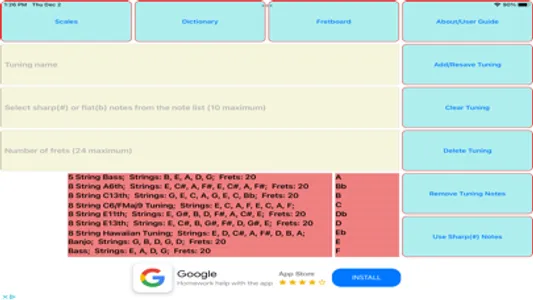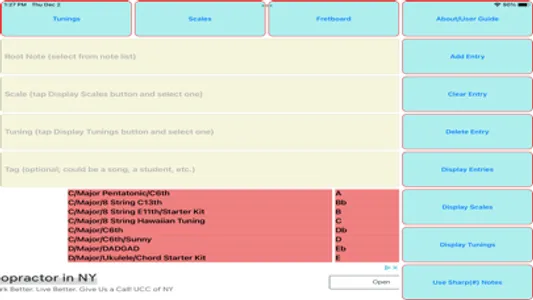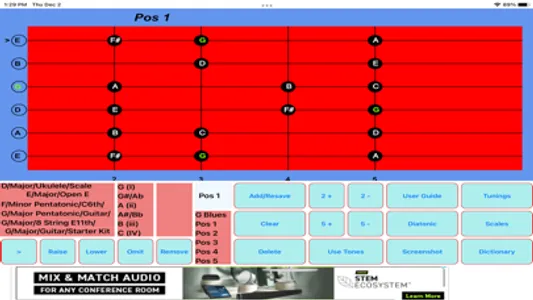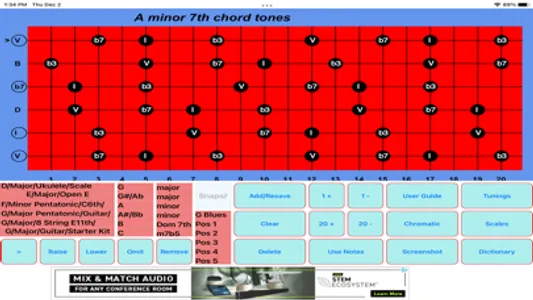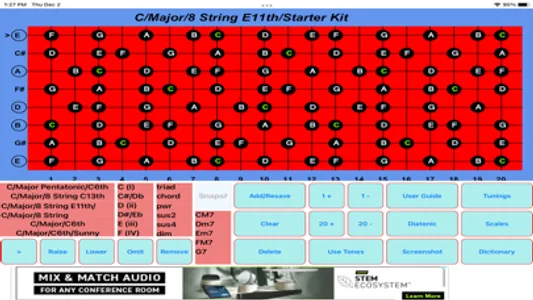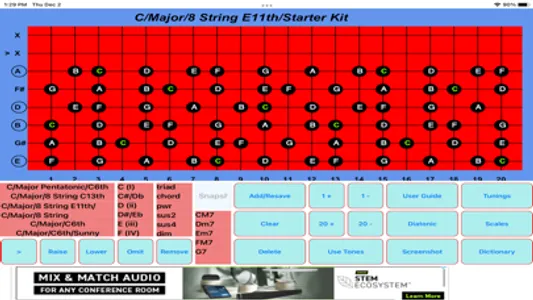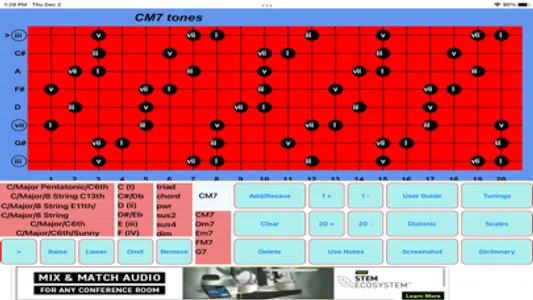Welcome to the Chord and Scale Finder! This application was designed to assist steel guitarists who need to navigate unusual tunings but in the course of designing it and talking with musicians it became apparent that it could also serve as a Swiss Army Knife for any stringed instrument. Interested in playing jazz on a bouzouki or oud using the harmonic minor scale or playing heavy metal on an 8 stringed guitar in some obscure tuning known only to you? Then this is the product for you!! Alternatively if you are just starting out on the guitar, ukulele, bass, dobro or any other stringed instrument you can create small (or not so small) libraries of screenshots featuring all of your "go to" chords and scales using notes and/or chord and scale tones for quick reference. Detailed information and examples on how to use the product can be found on the 69th Street Band's website (https://www.69thstreetband.com/chord-and-scale-finder.html). If you have specific questions address them to csfinder@69thstreetband.com.
The app comes pre-loaded with many of the most common tunings and scales but users are free to add their own tunings and scales and are in fact encouraged to do so. When a tuning and a scale are combined with a root note a Dictionary Item is created. These items can be displayed on the app's fretboard in an infinite number of ways and saved as snapshots. Users can block off certain frets if they want to drill down on scales or chords on different parts of the fretboard. For heptatonic (7 note) scales users can use an "Extensions" list to create any sort of extended chord. Initial results from test users suggest that the combination of snapshots and screenshots enable them to quickly build up libraries of chords and scales that aid them in quickly acquiring mastery on their instruments, or at least more quickly than would otherwise be the case. The app was designed to be as flexible and open ended as possible with the hope that this would enable players to explore genres of music that might not normally be associated with their instruments now that they have the ability to generate chord and scale road maps "on the fly", even to the point of adjusting strings in the app to see what new chord possibilities are created. One big drawback of alternate tunings is that you would have to relearn all the chords and scales you've already invested so much time figuring out. That problem is now solved.
The app comes pre-loaded with many of the most common tunings and scales but users are free to add their own tunings and scales and are in fact encouraged to do so. When a tuning and a scale are combined with a root note a Dictionary Item is created. These items can be displayed on the app's fretboard in an infinite number of ways and saved as snapshots. Users can block off certain frets if they want to drill down on scales or chords on different parts of the fretboard. For heptatonic (7 note) scales users can use an "Extensions" list to create any sort of extended chord. Initial results from test users suggest that the combination of snapshots and screenshots enable them to quickly build up libraries of chords and scales that aid them in quickly acquiring mastery on their instruments, or at least more quickly than would otherwise be the case. The app was designed to be as flexible and open ended as possible with the hope that this would enable players to explore genres of music that might not normally be associated with their instruments now that they have the ability to generate chord and scale road maps "on the fly", even to the point of adjusting strings in the app to see what new chord possibilities are created. One big drawback of alternate tunings is that you would have to relearn all the chords and scales you've already invested so much time figuring out. That problem is now solved.
Show More
